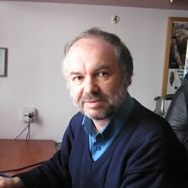Broken Symmetry
A special issue of Symmetry (ISSN 2073-8994).
Deadline for manuscript submissions: closed (30 April 2018) | Viewed by 12924
Special Issue Editor
Interests: optical solitons and optical communications; dynamics of long josephson junctions nonlinear dynamical lattices; pattern formation in one- and two-dimensional homogeneous and inhomogeneous nonlinear dissipative media Perturbation theory and variational methods; Ginzburg-Landau equations
Special Issues, Collections and Topics in MDPI journals
Special Issue Information
Dear Colleagues,
Dynamics of collective excitations is the central topic in experimental and theoretical studies in a great variety of physical settings. Spatial symmetry of collective excitations is determined by the shape of the underlying potential, the presence of which is necessary to confine the setting to a finite size, thus making it amenable to experimental realization. In particular, a ubiquitous type of the confinement is provided by double-well potentials (DWPs), which feature symmetry between two wells separated by a barrier. A principle commonly known in quantum mechanics, which is equally valid in many other areas, such as guided light transmission in linear optical media, is that the ground state (GS) of the linear system exactly follows the symmetry of the underlying confining potential. Other representations of the same symmetry may be realized by the system's excited states. In particular, the GS wave function trapped in the one-dimensional DWP is symmetric (spatially even), while the first excited state is antisymmetric (odd). The situation is made completely different by the inclusion of self-focusing nonlinearity (in particular, it is the Kerr nonlinearity affecting the guided light propagation, and the collisional nonlinearity in trapped Bose-Einstein condensates (BECs)): if the nonlinearity strength exceeds a critical value, the former symmetric GS becomes unstable, being replaced by a couple of asymmetric GSs, which are mirror images to each other. The fact that this spontaneous-symmetry-breaking (SSB) transition creates two coexisting GSs also breaks another fundamental principle of the linear theory (quantum mechanics, in particular), viz., that the GS cannot be degenerate. The nonlinearity with the self-defocusing sign does not destabilize the symmetric GS, but breaks the antisymmetry of the first excited state. These effects are elementary examples of the huge field of the SBB phenomenology, which has been developing at an accelerating pace in the course of the last 30 years, the progress being especially spectacular in nonlinear optics and the studies of BEC. The objective of the present Special Issue is to publish a selection of original papers and reviews which adequately represent the ongoing progress in this vast research area.
Prof. Boris Malomed
Guest Editor
Manuscript Submission Information
Manuscripts should be submitted online at www.mdpi.com by registering and logging in to this website. Once you are registered, click here to go to the submission form. Manuscripts can be submitted until the deadline. All submissions that pass pre-check are peer-reviewed. Accepted papers will be published continuously in the journal (as soon as accepted) and will be listed together on the special issue website. Research articles, review articles as well as short communications are invited. For planned papers, a title and short abstract (about 100 words) can be sent to the Editorial Office for announcement on this website.
Submitted manuscripts should not have been published previously, nor be under consideration for publication elsewhere (except conference proceedings papers). All manuscripts are thoroughly refereed through a single-blind peer-review process. A guide for authors and other relevant information for submission of manuscripts is available on the Instructions for Authors page. Symmetry is an international peer-reviewed open access monthly journal published by MDPI.
Please visit the Instructions for Authors page before submitting a manuscript. The Article Processing Charge (APC) for publication in this open access journal is 2400 CHF (Swiss Francs). Submitted papers should be well formatted and use good English. Authors may use MDPI's English editing service prior to publication or during author revisions.
Keywords
- Nonlinearity
- Self-trapping
- Solitons
- Ground state
- Double-well potentials
- Phase transitions
- Parity
- Josephson oscillations





